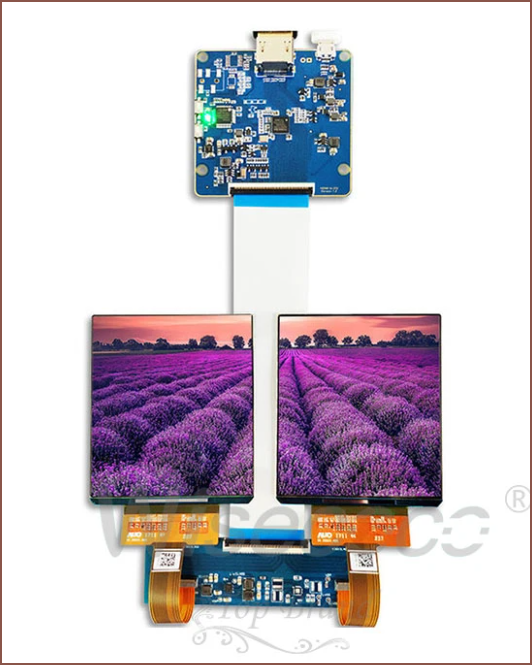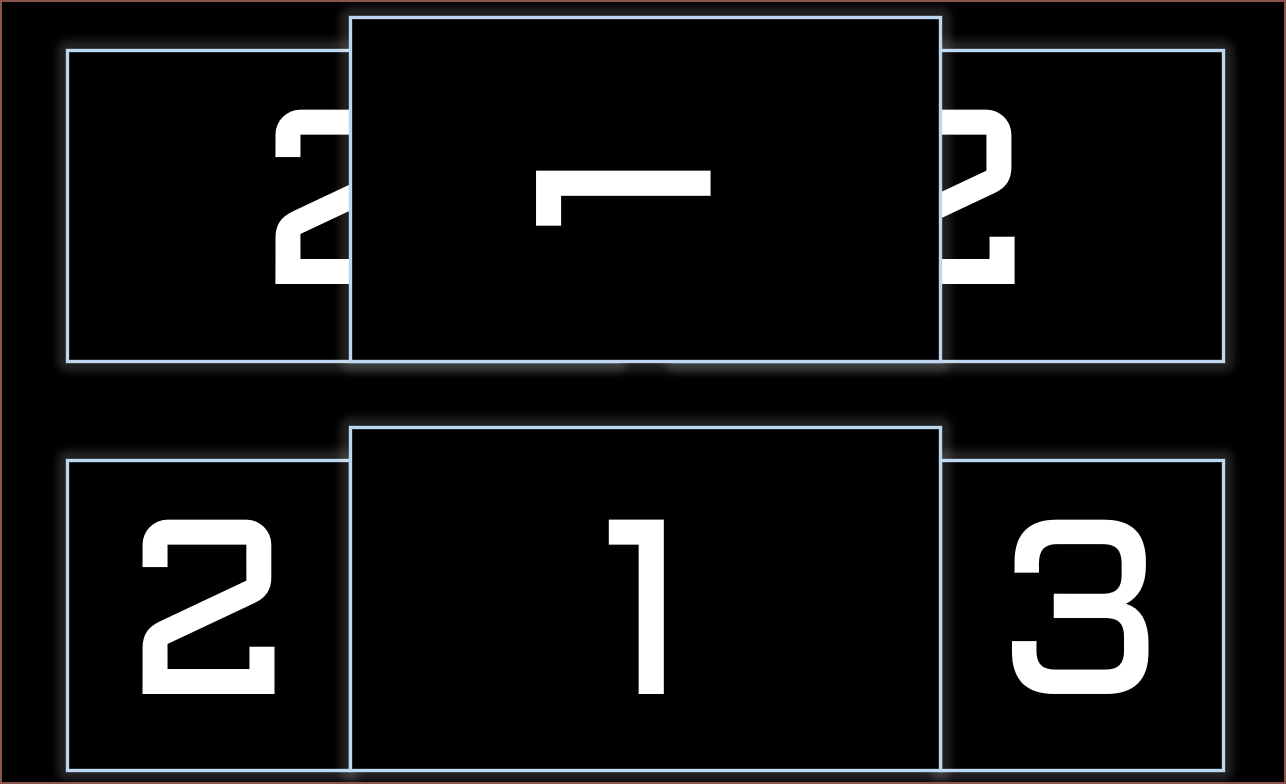I think it's time I started researching how I'm going to get the side screens to act like 2 seperate screens. The main idea is to drive 2 screens from one TB-chip, just like below:

In the image below, I show what any device will automatically display on the top, and how I actually want it to display on the bottom:

I'm not yet sure if I want the side screens aligned to the top or to the bottom (as shown). I think the latter looks a bit like a 3D carousel.
So I'm thinking that my options are:
- Give up on 90Hz OLED and go dual 60Hz Mini-LED 6.3's, even if Leti would probably be as long as a 16" laptop is wide (360mm).
- Use the extra length to fit in a 148Wh battery (up from 111Wh). I'm not planning on flying, but apparently you can take up to 160Wh inside carry-on luggage. The 100Wh limit is for suitcases.
- The issue with this one is that 360mm might be hard to use one-handed and it may be uncomfortable to look at one screen or the other since I'd likely have to turn my head.
- Find software that can configure the screens.
- I found "DisplayFusion", but at this time it doesn't support fullscreen windows.
- Try and find a USB3.0 -> HDMI that supports 1200*1080px 90Hz.
- This would allow Leti to drive 3 external monitors instead of 2, since both Intel and AMD have a cap of 4 monitors on the iGPU.
- Run each monitor directly, and just turn off the side monitors if I want to use external monitors.
- I'd also need a second I2C bus since the TB-chip only supports 2 different addresses.
- Wait. What if I flip the script entirely and do 4, but the OLED is the center screen?
Here me out here:

Am I really going to pick this device up to skim though 25 research papers while I run computational fluid dynamics on a CAD model most of the time?
No.
Why run dual QHD panels all the time when I probably could use less-than-HD real-estate more than 50% of the time? This would be similar to a laptop + 2 desktop monitors arrangement. This solution seems to get more of the benefits and less of the drawbacks:
- Benefits
- Higher utilisation of the TB-chips.
- 2 QHD sunlight readable displays instead of one.
- No bezel in the neutral neck angle (looking straight ahead) and I can hide the bezels of the QHD monitors behind the OLED panel.
- Excuse for an even larger battery.
- Main screen is the right orientation by default, and is 90Hz.
- If I had 2 screens of slightly different PPI's, I'd prefer the center one to have the lower PPI since objects would be slightly larger than the ones on the secondary screen.
- Drawbacks
- Still probably 360mm long. On the bright side, that gives Leti a body ratio of 3:1.
- The center screen is a barely-passing 75PPD resolution, and I worry that websites will have display issues with 1080px horizontal.
This not-a-notch design likely would be better as I'd more easily fit a webcam:

[25 May: Edit 1] I'm also thinking of virtually splitting the 6.3" panels in half. The center screen has an aspect ratio of 0.9:1 and these virtual side monitors would have a very similar aspect ratio of 0.889:1. The fullscreen bug becomes a feature in this way too.
 kelvinA
kelvinA
Discussions
Become a Hackaday.io Member
Create an account to leave a comment. Already have an account? Log In.